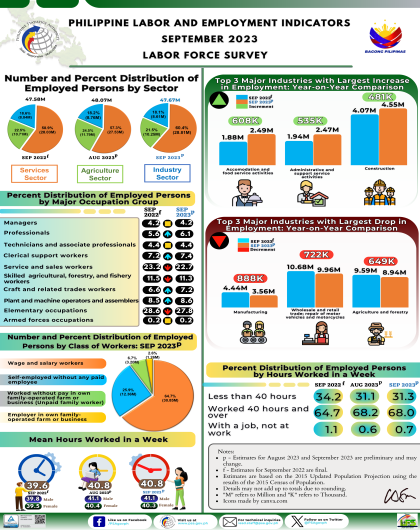Table A-1. Key Labor and Employment Indicators 2019f-March 2024p
Philippines | Labor Force Participation Rate (%) | Employment Rate (%) | Underemployment Rate (%) | Unemployment Rate (%) |
2019f | 61.3 | 94.9 | 13.8 | 5.1 |
2020f | 59.5 | 89.7 | 16.2 | 10.3 |
2021f | 63.3 | 92.2 | 15.9 | 7.8 |
2022f | 64.7 | 94.6 | 14.2 | 5.4 |
2023p | 64.9 | 95.7 | 12.3 | 4.3 |
Januaryf | 64.5 | 95.2 | 14.1 | 4.8 |
Februaryf | 66.6 | 95.2 | 12.9 | 4.8 |
Marchf | 66.0 | 95.3 | 11.2 | 4.7 |
Aprilp | 65.1 | 95.5 | 12.9 | 4.5 |
Mayp | 65.3 | 95.7 | 11.7 | 4.3 |
Junep | 66.1 | 95.5 | 12.0 | 4.5 |
Julyp | 60.1 | 95.2 | 15.9 | 4.8 |
Augustp | 64.7 | 95.6 | 11.7 | 4.4 |
Septemberp | 64.1 | 95.5 | 10.7 | 4.5 |
Octoberp | 63.9 | 95.8 | 11.7 | 4.2 |
Novemberp | 65.9 | 96.4 | 11.7 | 3.6 |
Decemberp | 66.6 | 96.9 | 11.9 | 3.1 |
2024p | 63.8 | 96.0 | 12.4 | 4.0 |
Januaryp | 61.1 | 95.5 | 13.9 | 4.5 |
Februaryp | 64.8 | 96.5 | 12.4 | 3.5 |
Marchf | 65.3 | 96.1 | 11.0 | 3.9 |
Notes:
f Estimates are final
p Estimates are preliminary and may change
Source: Philippine Statistics Authority, Labor Force Survey
Highlights of the March 2024 Labor Force Survey
The country’s unemployment rate in March 2024 was estimated at 3.9 percent. This was lower than the recorded unemployment rate in March 2023 at 4.7 percent but was higher than the 3.5 percent estimate in February 2024. (Table A-1)
In terms of magnitude, the number of unemployed persons 15 years old and over in March 2024 was estimated at 2.00 million. This was lower than the reported number of unemployed persons in March 2023 at 2.42 million. The number of unemployed persons in February 2024 was recorded at 1.80 million. (Table A)
The employment rate in March 2024 was recorded at 96.1 percent, higher than the 95.3 percent estimate in March of the previous year but lower than the estimate in February 2024 at 96.5 percent. (Table A-1)
In terms of levels, the number of employed persons 15 years old and over was estimated at 49.15 million, higher than the number of employed persons in March 2023 at 48.58 million and February 2024 at 48.95 million. (Table A)
The Labor Force Participation Rate (LFPR) in March 2024 was registered at 65.3 percent, lower than the estimated LFPR in March 2023 at 66.0 percent. In February 2024, the LFPR was estimated at 64.8 percent. (Table A-1)
The reported LFPR in March 2024 translates to a total of 51.15 million Filipinos aged 15 years old and over who were in the labor force, or those who were either employed or unemployed. In March 2023, the number of individuals aged 15 years old and over who were in the labor force was 51.00 million, while 50.75 million were in the labor force in February 2024. (Table A)
The average weekly hours worked of an employed individual in March 2024 was estimated at 40.7 hours per week, higher than the 40.0 average hours per week posted in March 2023 and 40.1 average hours per week in February 2024. (Table A)
The underemployment rate in March 2024 was posted at 11.0 percent, lower than the recorded rate in March 2023 at 11.2 percent and February 2024 at 12.4 percent. (Table A-1)
In terms of magnitude, 5.39 million of the 49.15 million employed individuals expressed the desire to have additional hours of work in their present job or to have additional job, or to have a new job with longer hours of work in March 2024. (Table A)
By broad industry group, the services sector continued as the top sector in terms of the number of employed persons with a share of 61.4 percent of the 49.15 million employed persons. The agriculture and industry sectors accounted for 20.5 percent and 18.1 percent of the employed persons, respectively. (Table 1)
The top five sub-sectors in terms of annual increase in the number of employed persons in March 2024 were the following:
a. Wholesale and retail trade; repair of motor vehicles and motorcycles (963 thousand);
b. Manufacturing (553 thousand);
c. Public administration and defense; compulsory social security (229 thousand);
d. Financial and insurance activities (173 thousand); and
e. Administrative and support service activities (140 thousand).
In contrast, the following five sub-sectors posted the highest annual decreases in the number of employed persons:
a. Agriculture and forestry (-881 thousand);
b. Fishing and aquaculture (-449 thousand);
c. Accommodation and food service activities (-118 thousand);
d. Mining and quarrying (-96 thousand); and Transportation and storage (-57 thousand);
(Table B)
As to month-on-month changes in the number of employed persons in March 2024, the top five sub-sectors with the largest increase were the following:
a. Public administration and defense; compulsory social security (606 thousand);
b. Manufacturing (351 thousand);
c. Information and communication (159 thousand);
d. Accommodation and food service activities (110 thousand); and
e. Wholesale and retail trade; repair of motor vehicles and motorcycles (83 thousand).
On the other hand, the top five sub-sectors with the largest drop in the number of employed persons from February 2024 to March 2024 were the following:
a. Agriculture and forestry (-318 thousand);
b. Transportation and storage (-292 thousand);
c. Construction (-214 thousand);
d. Administrative and support service activities (-118 thousand); and
e. Human health and social work activities (-75 thousand);
(Table B)
Wage and salary workers continued to account for the largest share of employed persons with 64.2 percent of the total employed persons in March 2024. This was followed by self-employed persons without any paid employee at 27.0 percent and unpaid family workers at 6.8 percent. Employers in own family-operated farm or business had the lowest share of 2.0 percent. (Table 1)
Among wage and salary workers, those employed in private establishments remained to have the highest share of 77.9 percent of the wage and salary workers or 50.1 percent of the total employed. This was followed by those employed in government or government-controlled corporations with a share of 14.8 percent of the wage and salary workers or 9.5 percent of the total employed. (Table 1)
Youth employment rate in March 2024 was estimated at 91.3 percent, higher than the estimated rate in March 2023 at 89.8 percent, but slightly lower than the February 2024 estimate at 91.4 percent. Among the employed youth, 10.9 percent were underemployed. This was higher than the 9.6 percent youth underemployment rate posted in March 2023 but lower than the 4 percent estimated rate in February 2024. (Table A)
(Sgd.) CLAIRE DENNIS S. MAPA, PhD
Undersecretary
National Statistician and Civil Registrar General
See more at the Labor Force Survey (LFS) landing page.


